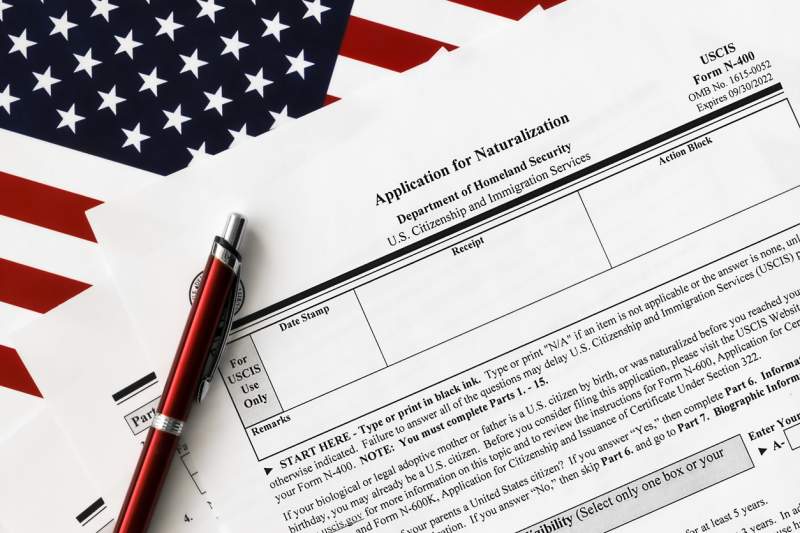Form I-130, officially known as the Petition for Alien Relative, is the primary document used by U.S. citizens or lawful permanent residents to establish the existence of a qualifying relationship with a foreign relative who wishes to immigrate to the United States. We submit the I-130 form to U.S. Citizenship and Immigration Services (USCIS) as a critical first step in the family-based immigration process. Its approval signifies USCIS’s recognition of the familial relationship and allows the relative to apply for a visa or adjust status, when eligible, for permanent residency.
Processing the I-130 petition involves a comprehensive evaluation of documentation and evidence to confirm the legitimacy of the relationship. We must provide proof such as birth certificates, marriage certificates, and additional supporting documents to verify our familial ties to the beneficiary. It’s essential for us to fill out the form accurately and provide substantial evidence to avoid delays or denials of the petition. Learn more about I 130
As the initial procedure in bringing relatives to the United States, understanding the I-130 process is crucial for us. It involves knowing the categories of eligible relatives, the priority system in place for visa allocation, and the various stages of the immigration timeline. Our familiarity with each step, from submission to potential interviews, can greatly influence the efficiency and outcome of our application.
Understanding the I-130 Form
The I-130 Form, officially named the “Petition for Alien Relative,” is a critical initial step for individuals seeking to establish legal family-based immigration status in the United States. It is crucial to comprehend the purpose, eligibility criteria, and necessary documentation to ensure accurate completion and submission.
Purpose of the I-130 Petition
The I-130 Petition is specifically designed to establish a familial relationship between a U.S. citizen or lawful permanent resident and a relative intending to immigrate to the United States. By filing this form, we are requesting that the U.S. Citizenship and Immigration Services (USCIS) recognize the relationship as eligible for family-based immigration benefits.
Eligibility Requirements
For Petitioners:
- Must be a U.S. citizen or a lawful permanent resident.
- Need to demonstrate a qualifying family relationship with the beneficiary.
For Beneficiaries:
- Can be spouses, children, parents, or siblings of the petitioner, depending on the petitioner’s immigration status.
- Must meet additional requirements specific to their relationship category.
Relationship Categories:
- Immediate Relatives: Spouses, unmarried children under 21, parents of U.S. citizens (petitioner must be 21 or older).
- Family Preference: Unmarried sons and daughters of U.S. citizens, spouses and children of green card holders, married sons and daughters of U.S. citizens, and siblings of U.S. citizens (petitioner must be 21 or older).
Required Documentation
When filing the I-130 Form, we must provide the following documentation:
- Proof of petitioner’s status: U.S. birth certificate, naturalization certificate, or green card.
- Proof of relationship: Marriage certificate for spouses, birth certificate for children, adoption documents for adopted children.
- Evidence of any legal name changes for the petitioner or beneficiary, if applicable.
All documents must be translated into English and accompanied by a certification from the translator.
Filing and Processing
We walk you through the necessary steps to successfully file an I-130 petition, outline the typical processing times, and address common hurdles with workable solutions.
Filing Procedures
To initiate the family-based immigration process, we must properly complete and submit Form I-130, Petition for Alien Relative, to the United States Citizenship and Immigration Services (USCIS). Key documents to include with the petition are:
- Proof of U.S. citizenship or permanent residency
- Proof of the family relationship
- Completed Form G-1145 to receive electronic notifications
Payment of the filing fee is mandatory and details can be found on the USCIS website for the most current amounts.
Processing Times
After filing, the processing time for an I-130 petition can vary widely depending on several factors:
- Relationship to the petitioner
- Service center handling the case
- Volume of petitions received
Current average processing times can be accessed through the USCIS website’s processing time tool by selecting the appropriate service center.
Common Issues and Resolutions
Throughout the processing phase, there are issues that commonly arise:
- Incorrect or Incomplete Forms: We should double-check all entries, and provide all required information and documents to avoid rejections or delays.
- Lack of Evidence: We must include adequate proof of the relationship. If additional evidence is requested, it should be supplied promptly and completely.
- Expired Documents: Ensure that all documents are current and valid. Renew any expired documents before submission, if needed.




